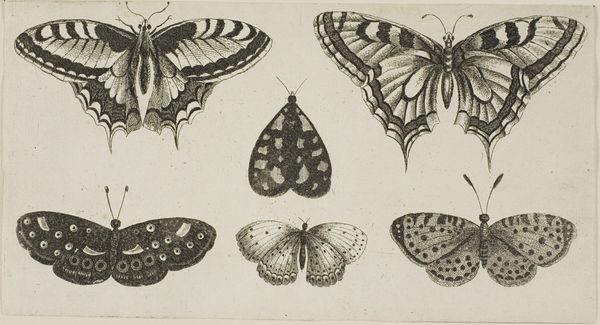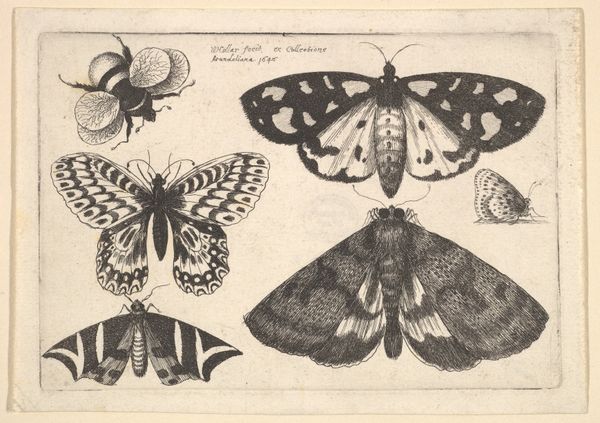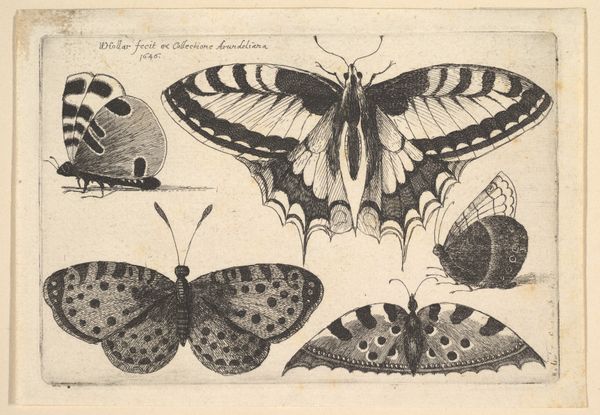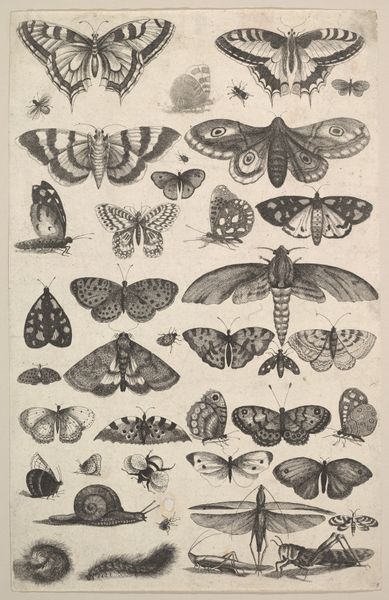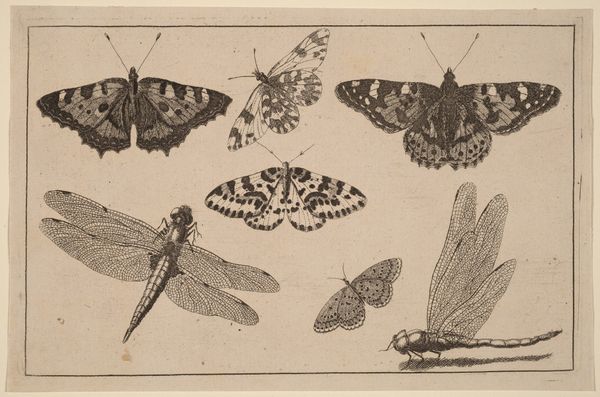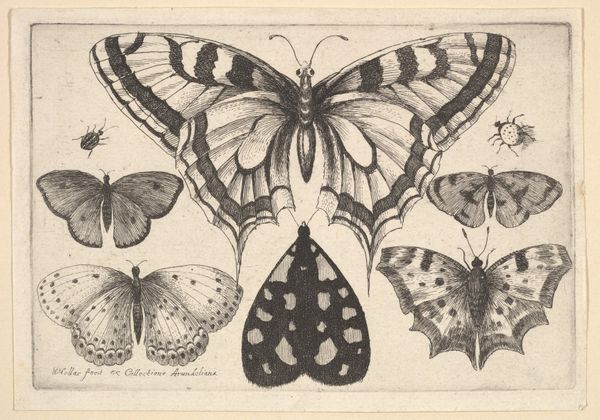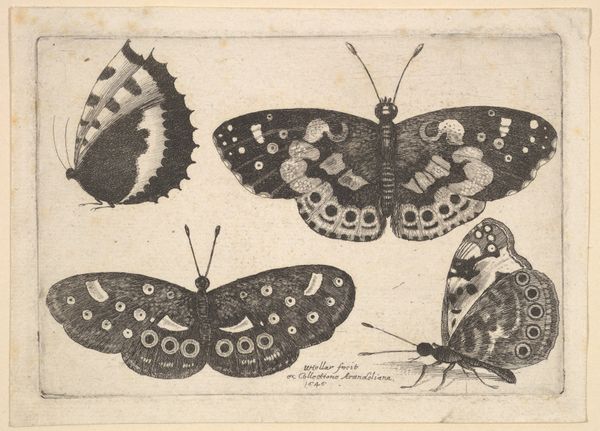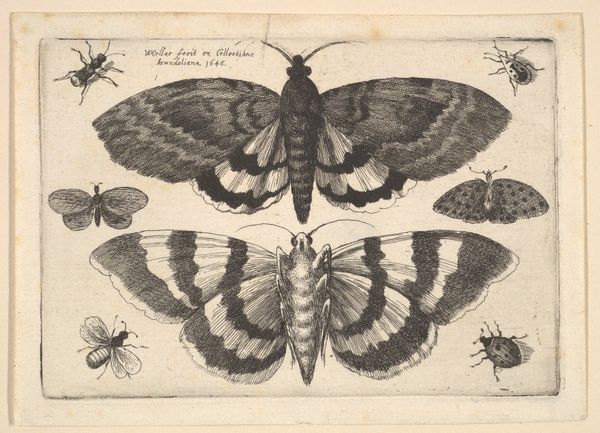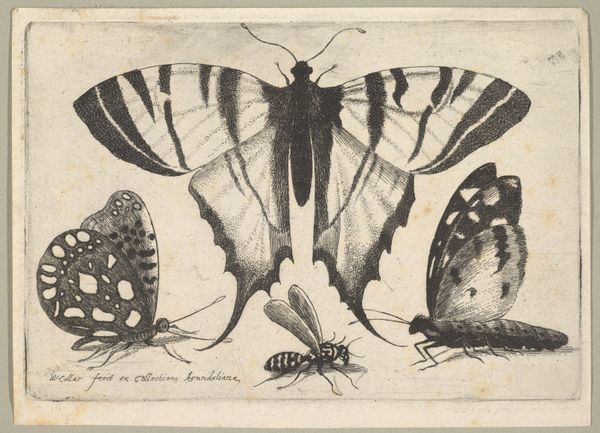
drawing, print, etching, paper
#
drawing
# print
#
etching
#
old engraving style
#
paper
#
history-painting
Dimensions: 116 × 181 mm (sheet, trimmed within platemark)
Copyright: Public Domain
Wenceslaus Hollar created this print of a moth, butterflies, and bees using etching, a process that democratized image production in the 17th century. These insects, depicted with scientific precision, reflect a growing interest in natural history during the Enlightenment. Made in Europe, this etching speaks to the rise of scientific societies, such as the Royal Society in London, which sought to classify and understand the natural world through observation and documentation. Hollar, a sought-after topographical artist, was employed by wealthy patrons and publishers, producing detailed prints that circulated widely. His natural history prints would have served as both educational tools and decorative objects for a burgeoning middle class. Understanding the historical context of this etching – the rise of scientific inquiry, the development of print culture, and the patronage system – enriches our understanding of its meaning and significance. Museum archives and historical society collections can provide valuable insights into the social and cultural forces that shaped Hollar's work.
Comments
No comments
Be the first to comment and join the conversation on the ultimate creative platform.
